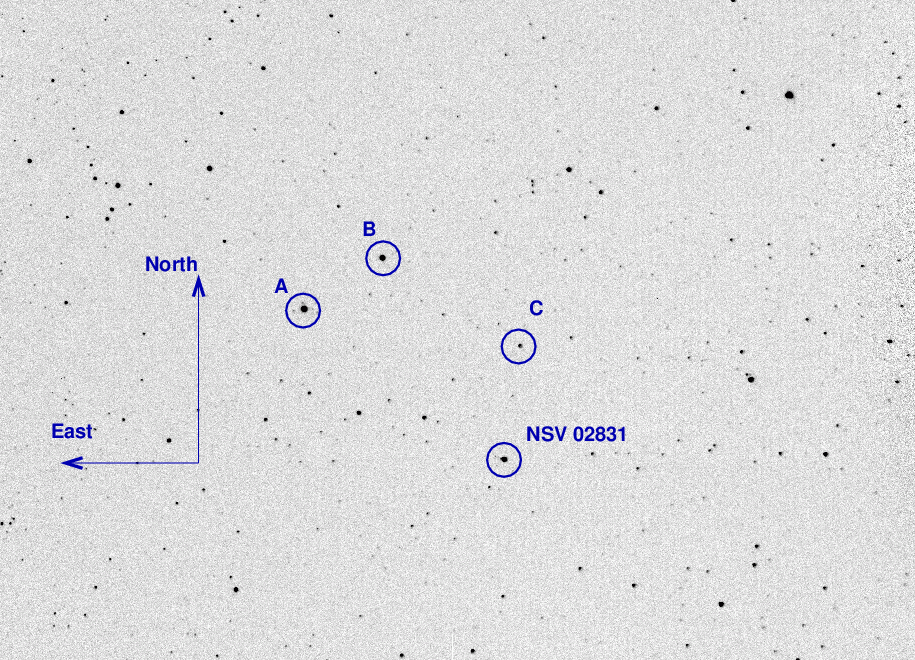
On the night of Feb 27/28, 2018, Victor Rau-Sirois and I took advantage of a rare, mostly-clear evening to monitor two of the stars in his capstone project.
The main setup was:
Conditions were fair:
We used the login appropriate for class work, rather than the one I usually adopt for my own observations, and everything seemed fine.
We took a series of dark images. As usual, the pixel values in the darks do NOT rise steadily and linearly with exposure time; there is at least one jump backward, to smaller pixel values, when the exposure time exceeds about 2.2 seconds.

After focusing, we found a mediocre FWHM = 4 pixels. Ugh. Fortunately, for photometry of isolated stars, this doesn't hurt very much.
The first target was NSV 02831, of which a finding chart appears below.
RA (J2000) Dec V
NSV 02831 06 07 21.9 +26 17 09
A = UCAC4 583-024488 06 07 57.355 +26 24 00.35 8.678
B = UCAC4 583-024402 06 07 42.122 +26 25 55.01 9.051
C = UCAC4 582-023609 06 07 17.515 +26 21 50.30 11.577

The second target was NSV 03287 .
RA (J2000) Dec V
NSV 03287 06 57 06.2 +44 06 35
A = UCAC4 672-047819 06 57 20.876 +44 14 42.31 10.813
B = UCAC4 672-047806 06 57 07.007 +44 12 42.14 11.102
C = UCAC4 671-048799 06 57 08.550 +44 04 59.11 12.085

Last modified 3/1/2018 by MWR.